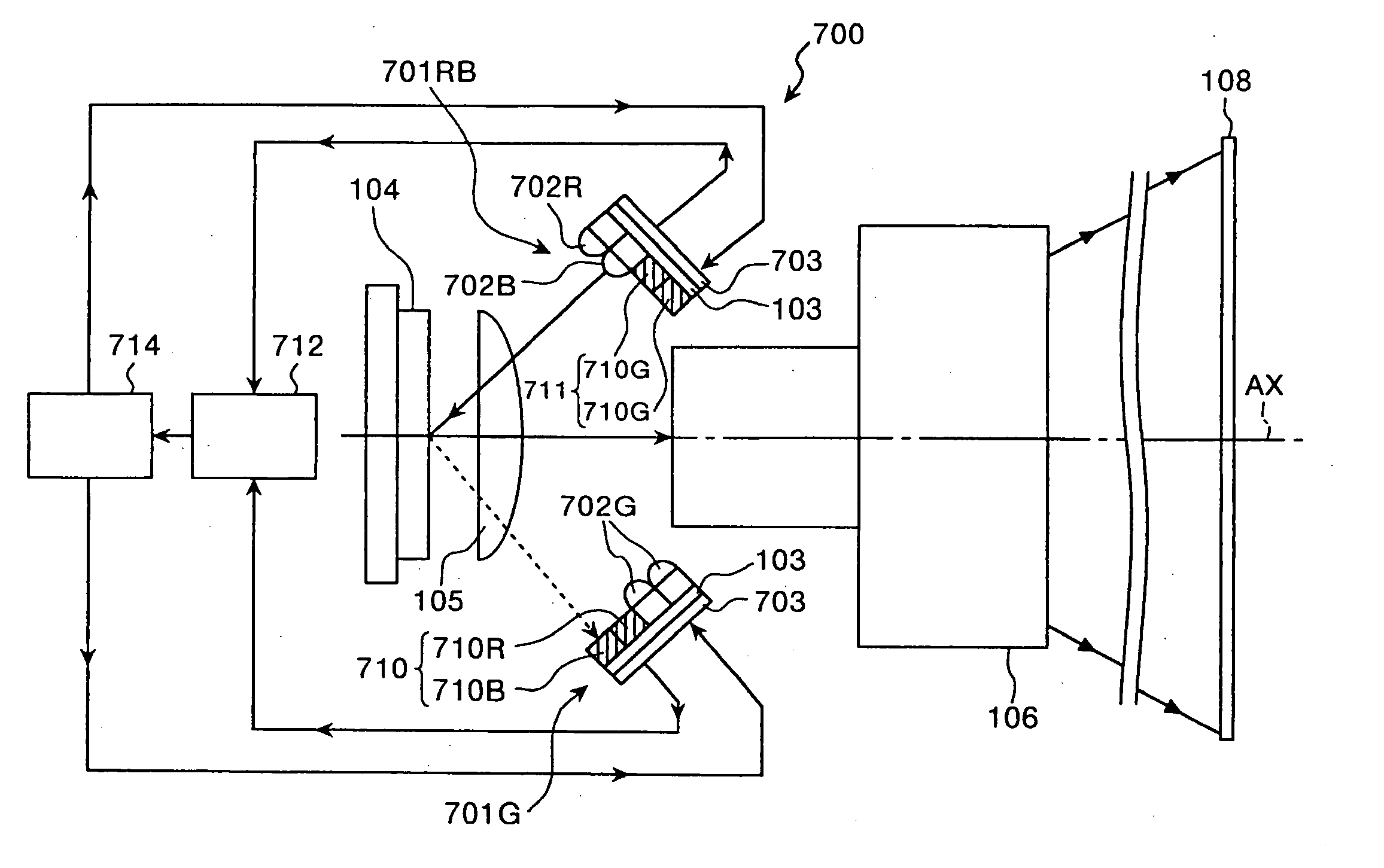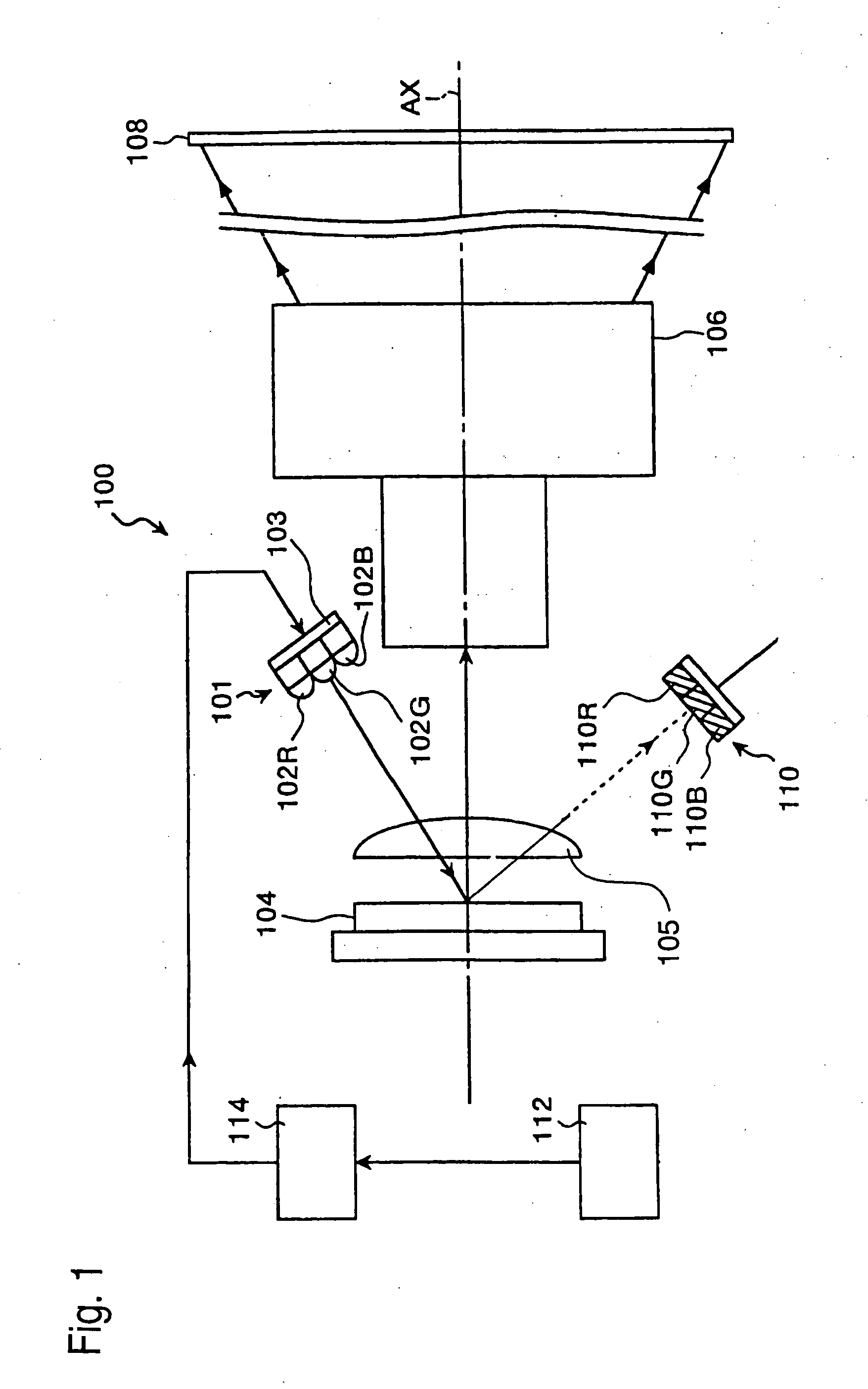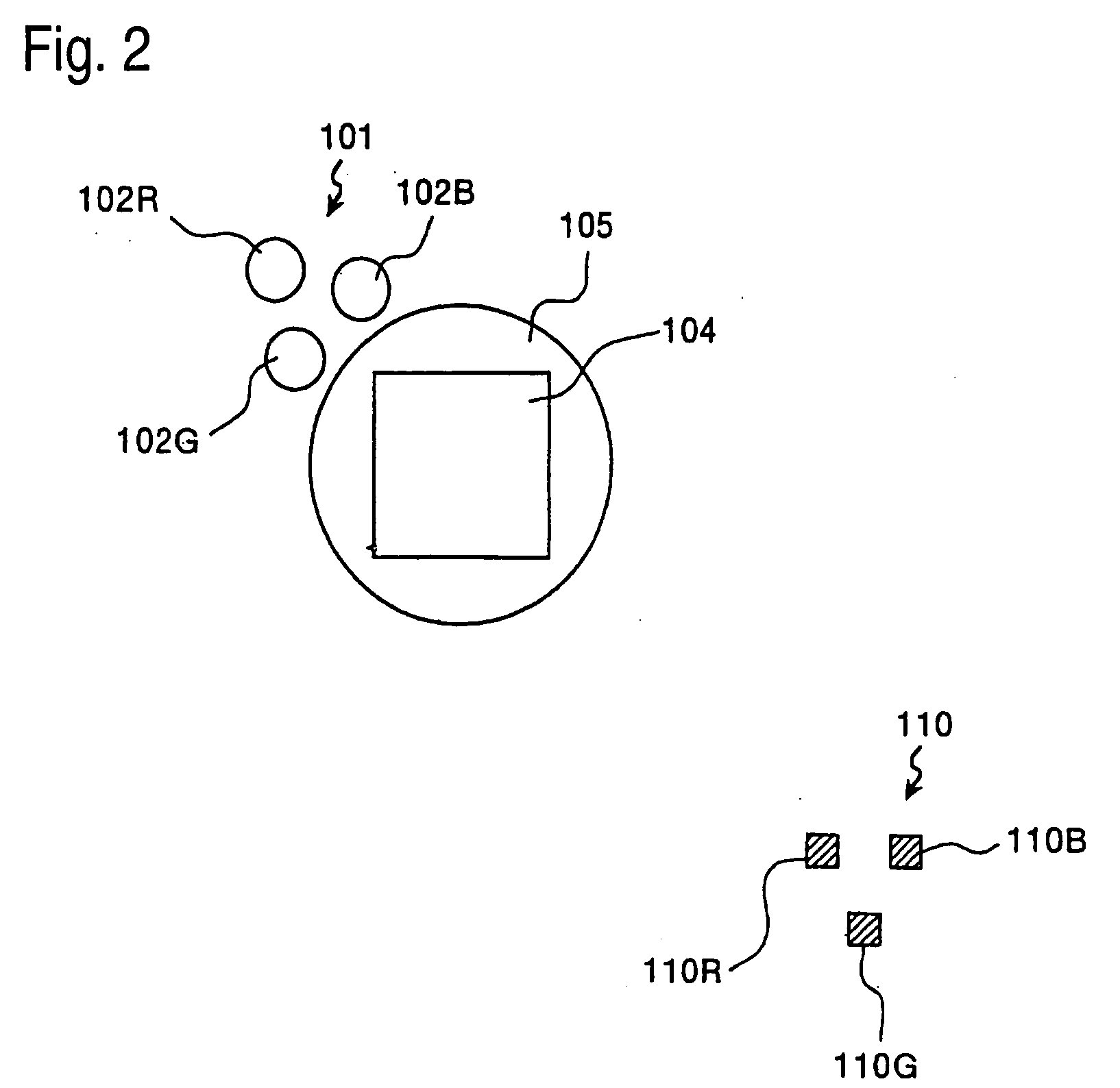Projector and optical device
a technology of optical devices and projectors, applied in static indicating devices, non-linear optics, instruments, etc., can solve the problems of significant physical change of solid-state light-emitting elements, non-uniform light intensity of projection images, and downsizing and weight reduction of projectors
- Summary
- Abstract
- Description
- Claims
- Application Information
AI Technical Summary
Benefits of technology
Problems solved by technology
Method used
Image
Examples
first exemplary embodiment
[0038] First Exemplary Embodiment
[0039] FIG. 1 shows a schematic of a projector 100 according to a first exemplary embodiment of the present invention. A light source 101 of the projector 100 includes a plurality of light-emitting diodes (hereinafter, "LED") which are solid-state light-emitting elements. The LEDs of the light source 101 are driven by a light-source drive circuit 103. The LEDs include an R-light LED 102R that emits red light (hereinafter, s "R-light"), a G-light LED 102G that emits green light (hereinafter, "G-light"), and a B-light LED 102B that emits blue light (hereinafter, "B-light").
[0040] The light emitted from the light source 101 passes through a field lens 105 and is then incident on a spatial light modulator 104. The field lens 105 has the function of illuminating the spatial light modulator 104 in a telecentric manner. Specifically, the function of letting the illumination light into the spatial light modulator 104 as parallel as possible to a principal ra...
second exemplary embodiment
[0059] Second Exemplary Embodiment
[0060] FIG. 5 shows a schematic of a projector 500 according to a second exemplary embodiment of the invention. The same components as those of the first exemplary embodiment are given the same reference numerals and their redundant description will be omitted. A light source 501 of the projector 500 includes a first light source 501RB that emits light in a first wavelength range and a second light source 501G that emits light in a second wavelength range different from the first wavelength range. The light source 501 denotes both of the first light source 501RB and the second light source 501G hereinafter. The first light source 501RB includes an R-light LED 502R that emits R-light and a B-light LED 502B that emits B-light. The second light source 501G includes G-light LEDs 502G that emit G-light. The first light source 501RB and the second light source 501G are arranged in approximately symmetrical positions with respect to the optical axis AX of ...
third exemplary embodiment
[0074] Third Exemplary Embodiment
[0075] FIG. 7 is a schematic of a projector 700 according to a third exemplary embodiment of the invention. The same components as those of the first exemplary embodiment are given the same reference numerals and their redundant description will be omitted. The light source of the projector 700 according to the exemplary embodiment includes a first light source 701RB that emits light in a first wavelength range and a second light source 701G that emits light in a second wavelength range different from the first wavelength range as in the second exemplary embodiment. The first light source 701RB includes an LED 702R that emits R-light and an LED 702B that emits B-light. The second light source 701G includes LEDs 702G that emit G-light. The first light source 701RB and the second light source 701G are arranged in approximately symmetrical positions with respect to the optical axis AX of the projector lens 106.
[0076] The first light source 701RB and a s...
PUM
| Property | Measurement | Unit |
|---|---|---|
| inclination angles | aaaaa | aaaaa |
| light intensity | aaaaa | aaaaa |
| wavelength range | aaaaa | aaaaa |
Abstract
Description
Claims
Application Information
 Login to View More
Login to View More - R&D
- Intellectual Property
- Life Sciences
- Materials
- Tech Scout
- Unparalleled Data Quality
- Higher Quality Content
- 60% Fewer Hallucinations
Browse by: Latest US Patents, China's latest patents, Technical Efficacy Thesaurus, Application Domain, Technology Topic, Popular Technical Reports.
© 2025 PatSnap. All rights reserved.Legal|Privacy policy|Modern Slavery Act Transparency Statement|Sitemap|About US| Contact US: help@patsnap.com



